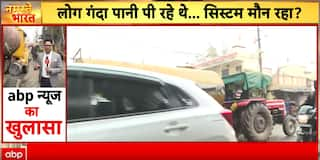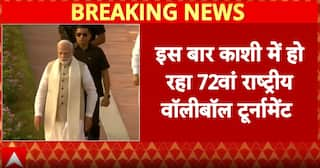The Future Of Neobanks In India. How It Is Entering The Government Sector
Public Sector Undertakings (PSUs) see Neobanks as a tool to better engage with their employees, improve their financial wellness, and improve their productivity by eliminating mundane HR/finance tasks

The Indian economy has been positively impacted by digitisation and technological advancements. We can observe transformations in every sector. Products and solutions built on the back of this advancement have changed the expectations of the people. A new breed of fintech, also referred to as Neobanks have sprung up to meet the growing expectations of customers in India.
Experts are of the view that banking will be done by people who know the basic tenets of online transaction, buying through apps, ordering food, watching videos or scrolling and swiping on social media platforms; banking will be embedded in a consumer’s life.
The experience will be seamless. Banks will continue to play a vital role, of course. They will be the custodian of trust, store of money, and the predominant source of credit. Technology companies are working closely with them, and across a customer’s lifecycle to create a connected ecosystem. According to a report by Statista, it is anticipated that the transaction value across ‘Neobanks’ will surpass $155.50 billion by 2027, growing at a whopping CAGR of 19.21 per cent.
Neobanks build digital platforms. Their one-stop-shop model enables distribution of a spectrum of financial services, including banking, remittances, money transfers, personal finance, and connected services such as payroll, Income Tax, etc. Importantly for a customer, on such platforms, the experience of consuming financial products feels natural, and an obvious need is fulfilled at the right place and time.
This is in sharp contrast to the traditional distribution of banking and financial products where the customer feels like they are being sold to. This enables a better experience and higher margins for the manufacturer.
The NITI Aayog, in their discussion paper titled 'Digital Banks', had called this out. As per the paper, Neobanks are to have higher efficiency metrics in distribution relative to incumbent banks, which makes them more effective. With the government being a front-runner in adopting technology and using it to drive efficiencies, Neobanks are likely to play a major role in the Indian banking system.
Challenging Times for Private and Public Sectors
The private sector is battling with the challenges of a broader economic slowdown which is only compounded by the turmoil in the Banking sector in the West. Over 100,000 employees have been recently laid off across major tech giants & IT/ITES companies. . Experts foresee it getting worse before it begins to get better. This makes life difficult for corporations. Employee engagement and productivity in tougher economic conditions is a much harder problem to solve. Any mention of phrases like cost-cutting, and 'unit economics' makes employees feel demotivated as they foresee poorer increments & benefits.
The public sector as an employer has its own set of challenges. Regardless of industrialisation or the information revolution, the government remains India's biggest employer. It employs about 2.5 crore people and incurs Rs 20 lakh crore annually in wage bills. The public sector struggles with an ever-increasing wage bill (including pensions/retirals, etc.). Aside from this, they clearly struggle with engagement, productivity, and an employer brand not in sync with the values of the current youth.
Technology to Drive Efficiencies
Historically, recessions or difficult economic environments have been a hotbed for innovation. These innovations drive up human productivity and create value in the economy. Neobanks use cutting-edge technologies such as artificial intelligence (AI) and data analytics to drive a very personalised experience of consumption for customers. Not only does this improve the experience, but it also eliminates leakages making it efficient for all stakeholders (merchants, banks, financial institutions, and employers) for the ecosystem to serve the customer.
A good example is how UPI has completely done away with waiting around for change for a Rs 100 or Rs 500 note after taking a product/service on the roadside. By some estimates, this improves productivity (by saving us time & mental hassle) by about 1.2 per cent. With numerous advantages offered by Neobanks and their technology, the government of India is considering embracing them to increase efficiencies.
Public Sector an Early Adopter of Neobanks
In our conversation with leaders of public sector organisations, it was clear that they see employee engagement, productivity, and employer brand as priority items. They acknowledge that the current government is keen on being efficient and eager to adopt new technology. Solutions like Digi Yatra demonstrate the government’s keenness to adopt technology solutions. Further, they understand that technology has an adoption curve- Technology solutions will not be perfect on day 1 and they are often upgraded just like Mobile Apps.
Public Sector Undertakings (PSUs) see Neobanks as a tool to better engage with their employees, improve their financial wellness, and improve their productivity by eliminating mundane HR/finance tasks. In economic terms, they see a positive impact of about 5-6 per cent of their overall wage bill. In addition to this, they see this as a way to signal to the current and future employees of their eagerness to adopt new technology and shed the image of a slow, bureaucratic, and traditional organisation.
Leaders in PSUs consider attracting top talent an important task. Aside from the nationalistic fervour, they consider it their responsibility to offer an experience more in tune with what today’s technology enables and what the private sector offers. They consider this as one of their strategic objectives.
The author is the founder of OneBanc.
[Disclaimer: The opinions, beliefs, and views expressed by the various authors and forum participants on this website are personal and do not reflect the opinions, beliefs, and views of ABP News Network Pvt Ltd.]





































